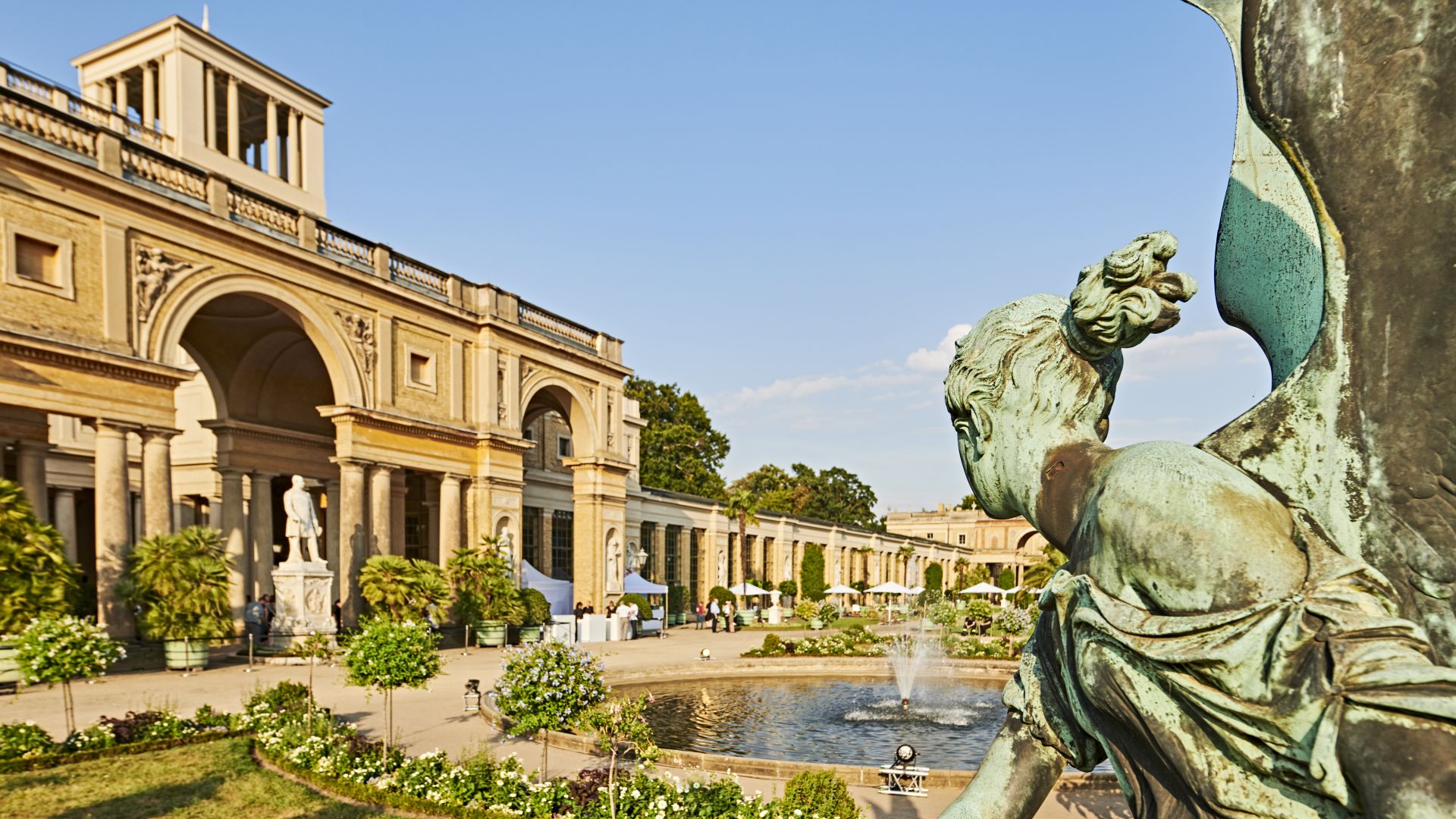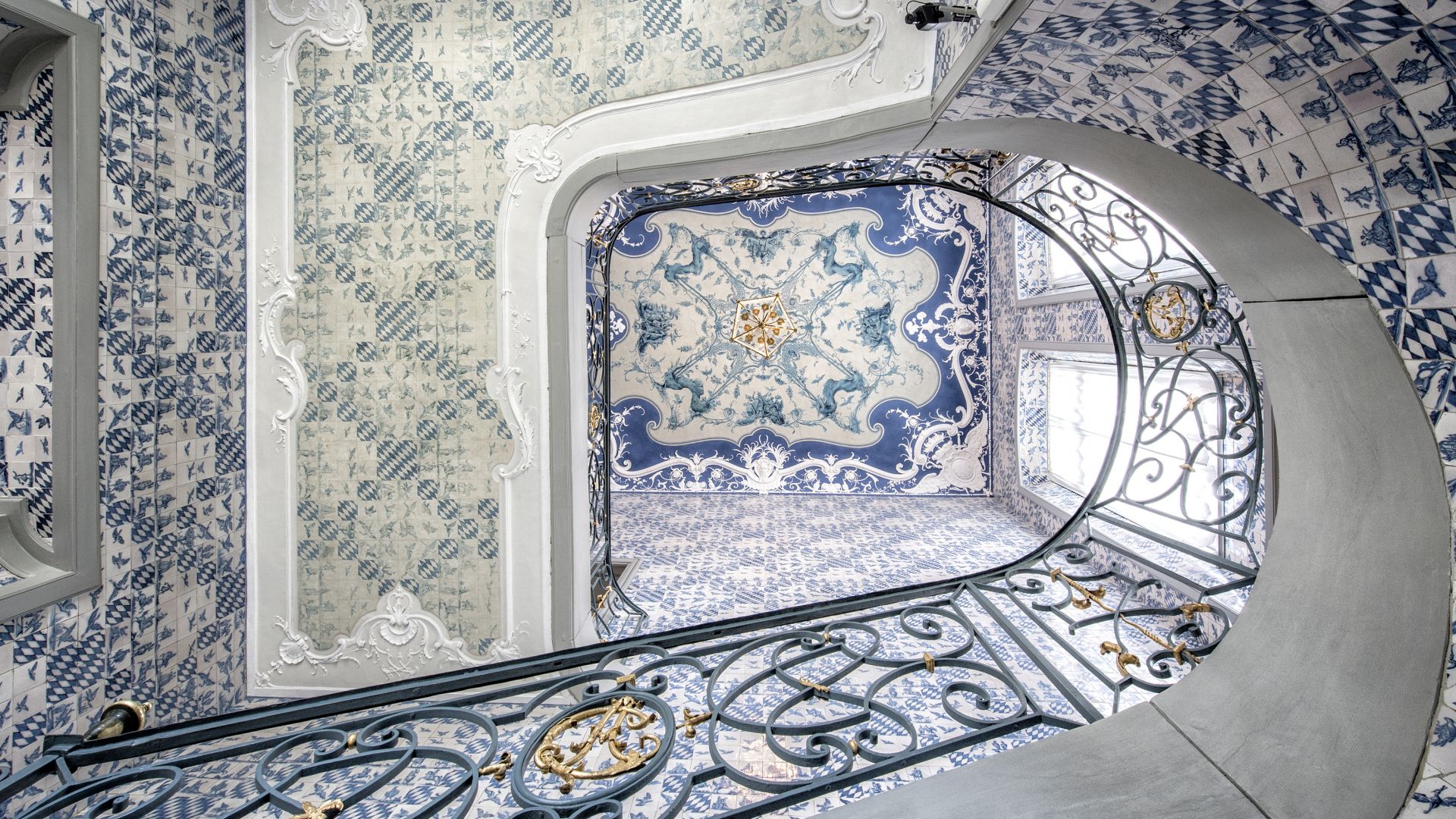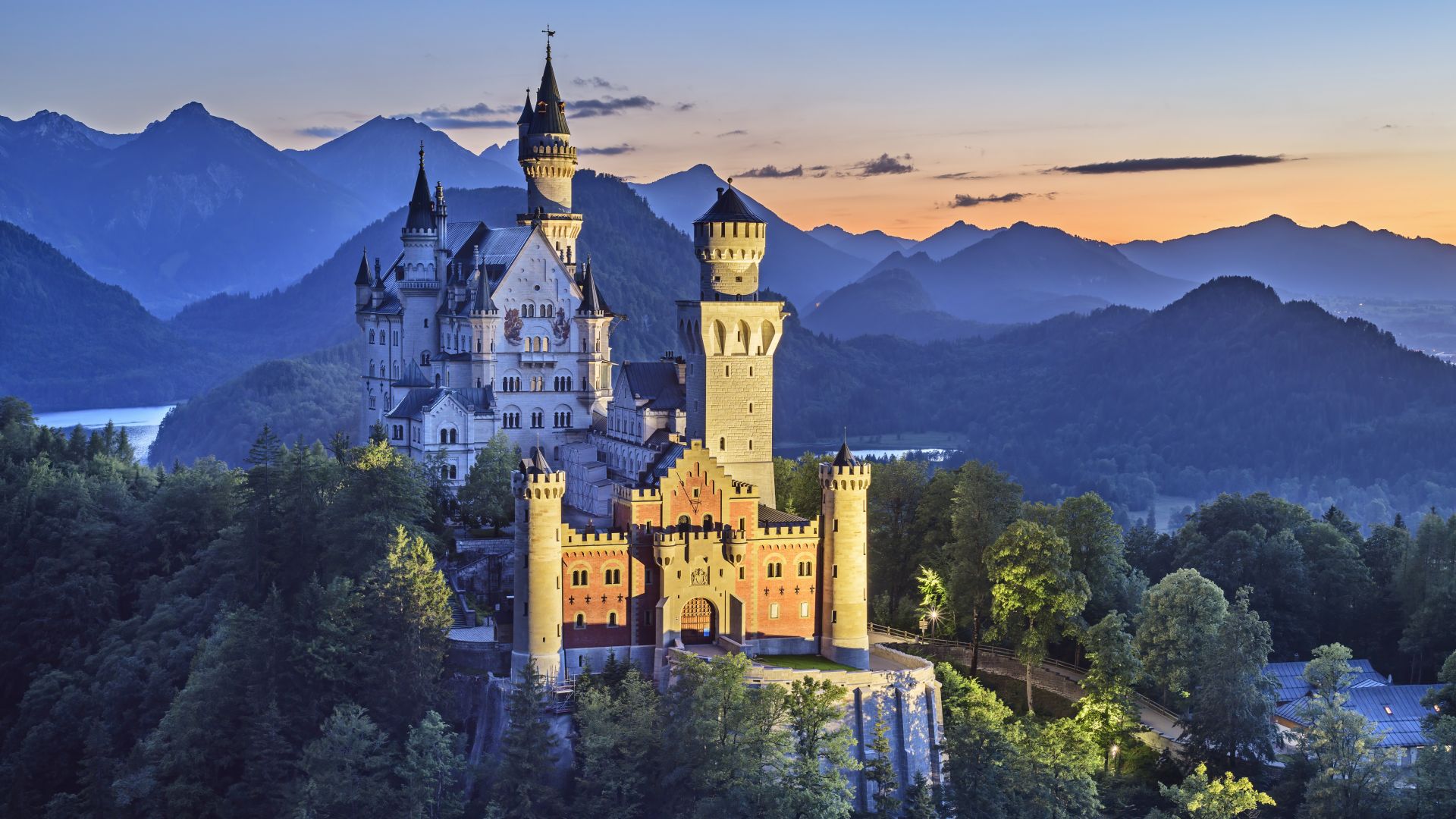Castillos y fortalezas
16 castillos impresionates en Alemania
Alrededor de 25.000 castillos, palacios y mansiones son testigos de la historia de Alemania: algunos de ellos siguen con su antiguo esplendor hoy en día, mientras que otros son ruinas que nos recuerdan tiempos pasados.
Los magníficos palacios de los grandes gobernantes
La variedad de castillos y palacios en Alemania va desde una simple mansión, hasta los representativos edificios prestigiosos de las grandes dinastías gobernantes. Este es el caso del castillo de Sanssouci en Potsdam, apodado como el "Versalles prusiano", que el rey Federico II, de la dinastía Hohenzollern, construyó. Junto con su parque, el palacio rococó ha sido Patrimonio de la Humanidad de la UNESCO desde 1990. Otro de los lugares favoritos de la dinastía Hohenzollern es El Palacio de Charlottenburg en Berlín.
Cerca de la capital del estado de Sajonia, Dresde, se encuentra El castillo de Moritzburg, un emblema de la familia noble de la dinastía Wettin. El complejo barroco también incluye El Castillo del Faisán, visible desde Moritzburg a unos 2,5 kilómetros de distancia.
 Potsdam: Orangerieschloss im Park Sanssouci
©DZT (Jens Wegener)
Potsdam: Orangerieschloss im Park Sanssouci
©DZT (Jens Wegener)
El patrimonio cultural y las joyas arquitectónicas
En la lista del Patrimonio Mundial de la UNESCO, hay otros castillos y palacios además del Palacio de Sanssouci: por ejemplo Los castillos Augustusburg y Falkenlust en Brühl (Renania del Norte-Westfalia), que transporta a los visitantes con sus jardines y parques al siglo XVII. Un sitio protegido por la UNESCO en Hessen es el Parque de montaña de Wilhelmshöhe, un parque situado sobre Kassel, donde se encuentra el palacio de Wilhelmshöhe. El castillo de Wartburg, ubicado en la ciudad de Eisenach, en el estado de Turingia, también forma parte del Patrimonio de la Humanidad y es particularmente significativo puesto que albergó al reformador protestante Martín Lutero. Fue aquí donde tradujo el Nuevo Testamento al alemán.
Algunos castillos y palacios son ejemplos perfectos para sus épocas arquitectónicas. Por ejemplo, El castillo de Ahrensburg, cerca de Hamburgo, se considera una de las mayores obras de la arquitectura renacentista en Schleswig-Holstein. Mientras que El castillo de Saarbrücken representa el estilo barroco como parte de la planificación urbana general. También un castillo mucho más pequeño, El castillo de Schönebeck, en Bremen-Vegesack, combina el estilo Barroco con las casas de madera del norte de Alemania. Una joya del clasicismo es la Casa Jenisch de Hamburgo, una casa de campo con un extenso jardín, que ofrece una amplia vista sobre el Elba.
 Palace Brühl
©DZT (Florian Trykowski)
Palace Brühl
©DZT (Florian Trykowski)
Castillos de cuento de hadas y castillos de caballeros
Ninguna otra época ha adorado tanto los edificios de los castillos como el período romántico. El símbolo de esto por excelencia es El castillo de Neuschwanstein que se eleva sobre el cielo de Füssen, en el Allgäu bávaro. Menos conocido es el "Neuschwanstein del norte": El castillo de Schwerin, la antigua residencia del Gran Ducado y hoy en día la sede del parlamento estatal de Mecklenburg-Vorpommern. El historicismo romántico también se mantuvo en la construcción de El castillo de Marienburg. Esta fue la residencia de verano neogótica de la familia Welf, visible desde lejos, se levanta a unos 20 kilómetros al sur de Hannover en las laderas del Marienberg en Baja Sajonia. Numerosas reformas también dieron al Castillo de Wernigerode en Sajonia-Anhalt su actual forma, como si de cuento de hadas se tratara.
Pero lo que los edificios historicistas imitaron, todavía puede ser admirado en la forma original de hoy en día: castillos medievales como en un libro ilustrado. El ejemplo más famoso de esto es probablemente el Castillo Eltz. Es un castillo situado en la cima de una colina, propio del siglo XII de la región de Eifel en Renania-Palatinado, y ha sido propiedad de una misma familia noble durante más de 850 años. Las ruinas del castillo son un símbolo del aura romántica de las viejas murallas. También encontramos El castillo de Heidelberg que ha atraído a turistas de todo el mundo durante muchas generaciones a la ciudad del Neckar, en el norte de Baden-Württemberg.
 Schwangau: Neuschwanstein Castle illuminated at dusk in front of the Tannheimer Mountains, Ammergau Alps
©lookphotos (Andreas Strauß)
Schwangau: Neuschwanstein Castle illuminated at dusk in front of the Tannheimer Mountains, Ammergau Alps
©lookphotos (Andreas Strauß)
Castles and Palaces – A Surprising Journey of Discovery
Close your eyes and let yourself be acoustically enchanted by the diverse impressions on your journey through Germany!
Intro with music:
“Experience Germany – A Surprising Journey of Discovery”
High walls and pointed towers, picturesquely situated on a hilltop: the Neuschwanstein Castle in Bavaria’s Allgäu region is one of Germany’s most famous sights. The museum advisor of the castles of Ludwig the Second, Dr. Uwe-Gerd Schatz, says this is because it has a unique selling point that is unlike most other castles.
OST Schatz: Neuschwanstein, Bavaria
Man: The Neuschwanstein Castle is white. This was a change of plan by Louis the Second that happened during the construction. He wanted cladding with white limestone. This distant effect in white makes it look unique, also more historical, because white castles like this are only found in paintings in books.
Perhaps that’s why Walt Disney chose it as the model for the castle in Sleeping Beauty. If he had been looking for a medieval knight’s castle, he might have come across Eltz Castle in the Eifel region, which, at any rate, had made it onto the former 500 Deutsche Mark bill. And rightly so, according to the lord of the castle, Jakob zu Elz.
OST Eltz Castle: Skyscraper of the Middle Ages, Rhineland-Palatinate
Man: Eltz Castle is an almost 900-year-old castle, built over 500 years, nestled in a natural paradise and standing completely alone on a rock in a valley. At its highest, it is over 40 meters tall, with up to 10 floors – an actual skyscraper of the Middle Ages.
Charlottenburg Palace in Berlin is quite different, explains Christian Tänzler of Visit Berlin. It served as the summer residence of Prussian kings from 1701 to 1888 and is an important cultural treasure not only because of its unique porcelain exhibition.
OST Charlottenburg Palace
Man: Charlottenburg Palace is found within in a huge park. This beautiful building can be compared to Sanssouci. It has the ambience of a park and is also more or less by the water, so you have the combination of nature and culture. Charlottenburg Palace is perhaps even an unexpected highlight in our cultural scene.
Schwerin Castle is not located by the water, but on it. Katrin Hackbarth of the local tourism association explains that of all the 2,000 castles, manor houses and stately homes in Mecklenburg-West Pomerania, it is the most striking castle.
OST Hackbarth: Schwerin Castle, Mecklenburg-West Pomerania
Woman: It is a fairy-tale castle with many turrets – 365, one for each day of the year, each with a golden dome. A castle that stands in the middle of Lake Schwerin on stilts on a small peninsula. Very imposing, this is all guests’ first port of call in Schwerin: a visit to the castle and a stroll through the gardens. This is the distinctive feature of Mecklenburg-West Pomerania.
It’s a similar story when you visit Heidelberg on the Neckar River, where the imposing ruins of Heidelberg Castle rise high above. It’s worth a visit just for the view from up here, says tour guide Susanne Späinghaus.
OST Susanne Späinghaus, tour guide, Heidelberg Castle, Baden-Württemberg
Woman: This view is incredible. The narrow valley that then opens into the Rhine plain, where everything is so green, then there are the red roofs of the small old town below and the bridge that has crossed the Neckar for centuries. You automatically take a deep breath here. I notice how visitors always go “ah, ah” (for the voice-over: take a deep breath) … and then the cameras come out once they recover from the view. The view is also something very special.
Lively costume tours through the Middle Ages, Renaissance, baroque and Romantic eras bring to life the personal fates of the various castles’ residents. In the Marienburg Castle near Hanover, tour guide Tamara Podesky leads visitors through the royal living quarters.
OST Marienburg Castle: Lady’s maid and film set
Woman: Guests visiting Marienburg Castle would do best to book a scenic tour with, for example, a lady’s maid of the queen, who also appears in traditional robes and tells all of the royal secrets. Various fairy tales have been filmed there, including “All-Kinds-of-Fur” and “The Twelve Months”, which is about dark forces. Our Marienburg Castle is the Neuschwanstein of the north.
Maike Bialek from the Bremen Economic Development Agency admits that this is because fairytale castles are actually rather rare in northern Germany.
OST Schönebeck Palace, Bremen
Woman: We northern Germans have less finely chiseled towers. We are a bit more conservative. We have a moated castle built in the North German half-timbered style in Bremen’s district of Vegesack, located on the Schönebecker Aue, where a small river has been dammed and flows into a small pond in front of the palace: a simple palace, but it has a beautiful half-timbered structure on the outside.
Andreas Lehmberg from the Harzer Tourismusverband reveals that half-timbering can also be found at the very top of Falkenstein Castle in Unterharz, a high medieval hilltop castle that has made headlines as a hidden treasure.
OST Falkenstein Castle: Treasure
Man: The highlight of this treasure is the very valuable, so-called Asseburg cup. It was buried on the castle grounds, and in GDR times the Stasi tried to find it after hearing rumors about the treasure. But it was only after the fall of the Berlin Wall that a son-in-law of Count Lothar von Asseburg, who last lived there, found a treasure map in the will, which made it possible to find the treasure.
Treasures, knights, adventure – many German castles and palaces hold exciting secrets. Birgit Grauvogel from the Tourismus Zentrale Saarland explains that the Saarbrücken Castle has an unusual central glass structure, but the real mystery lies beneath it.
OST Birgit Grauvogel, Saarland
Woman: Beneath the castle, there is a preserved underground fortification with battlements and casemates from the Middle Ages. An insider tip: Visitors should stop by the castle on Sundays at 11 a.m., because that’s when the castle ghost haunts the castle, and where you can access the underground casemates.
From the old town of Saarbrücken, you have a particularly beautiful view of the castle and the baroque garden. Herbert Lang from Hessen Tourismus reports that a park with unique garden art awaits visitors around Hesse’s Wilhelmshöhe Castle in Europe’s largest hillside park, which has impressive water features.
OST Lang: Bergpark Wilhelmshöhe, Hessen
Man: At a certain point, water runs down various cascades into a park, fills the lake, and finally, the fountain starts shooting water. It’s like a really great fireworks display, a grand show, a really sophisticated production from the past. And my own personal highlight is the dachshund games in the Bergpark Wilhelmshöhe. It is really sweet. Anyone can come with their dachshund and then it is day of the dachshunds in the hillside park.
Why not? After all, dachshunds were to German Kaiser Wilhelm the Second what corgis are to Queen Elizabeth.
OUTRO